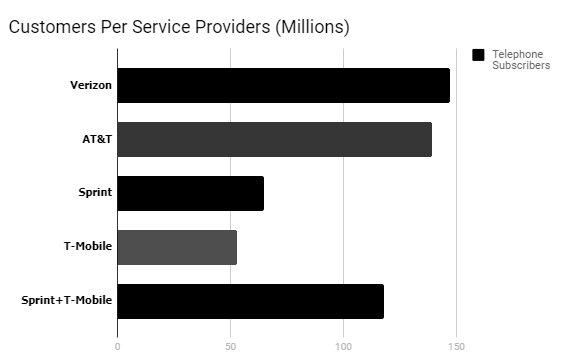Sprinting into a New Age of Wireless Networks

T-Mobile and Sprint are catching up to Verizon and AT&T in subscribers after their April 29 merge.
After a complicated series of disagreements and withdrawals, mobile network providers T-Mobile and Sprint decided to merge into a single company on April 29. The two companies will run under the name of T-Mobile. The joint company plans to use its new resources and technology to continue to innovate in the mobile networking market.
According to the Washington Post, “This expanded scale could have important consumer implications. Right now, the whole wireless industry is racing to deploy a next-generation data technology called 5G.”
If the deal is approved by the FCC and Justice Department, the company will become the second largest carrier after Verizon and will control upward of 100 million customers. However, this change may cause employees at both companies to be laid off and could increase prices for reseller companies like Boost Mobile and MetroPCS.
“Prices are probably going to rise, since Sprint and T-Mobile are currently the big competitors for low-price wireless service. I can’t speak for the future, but while I don’t pay my phone bill, I’m sure people who do will not be quite so content with it,” freshman and T-Mobile user Ethan Hung said.
Your donation will support the student journalists of Portola High School. Your contribution will allow us to purchase equipment and cover our annual website hosting costs.

Jordan Lee, commonly referred to as “The Flash,” is your Visual Director. He has held the positions of front page and photo editors in previous years...

Shawyan Rooein is your Centerspread editor of the Portola Pilot for the 2019-2020 school year! This is his third year on the Portola Pilot team and he...



